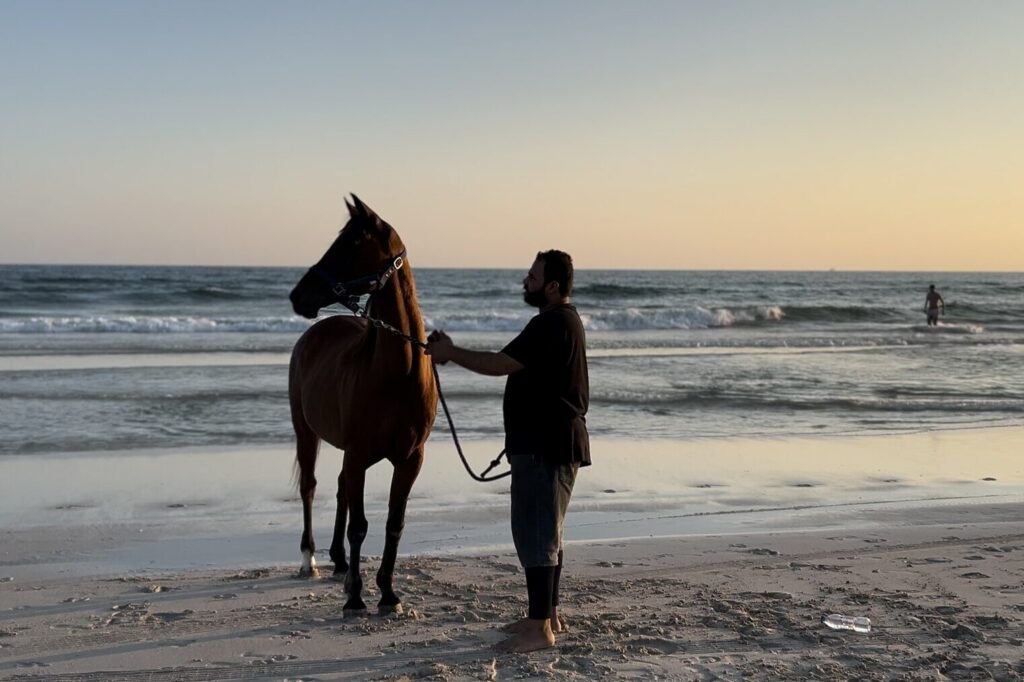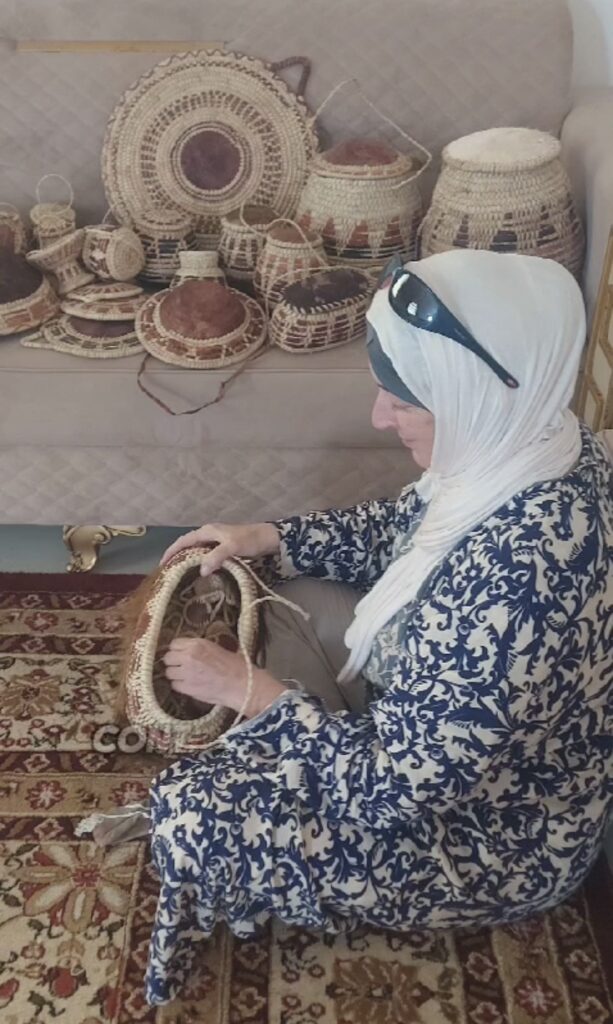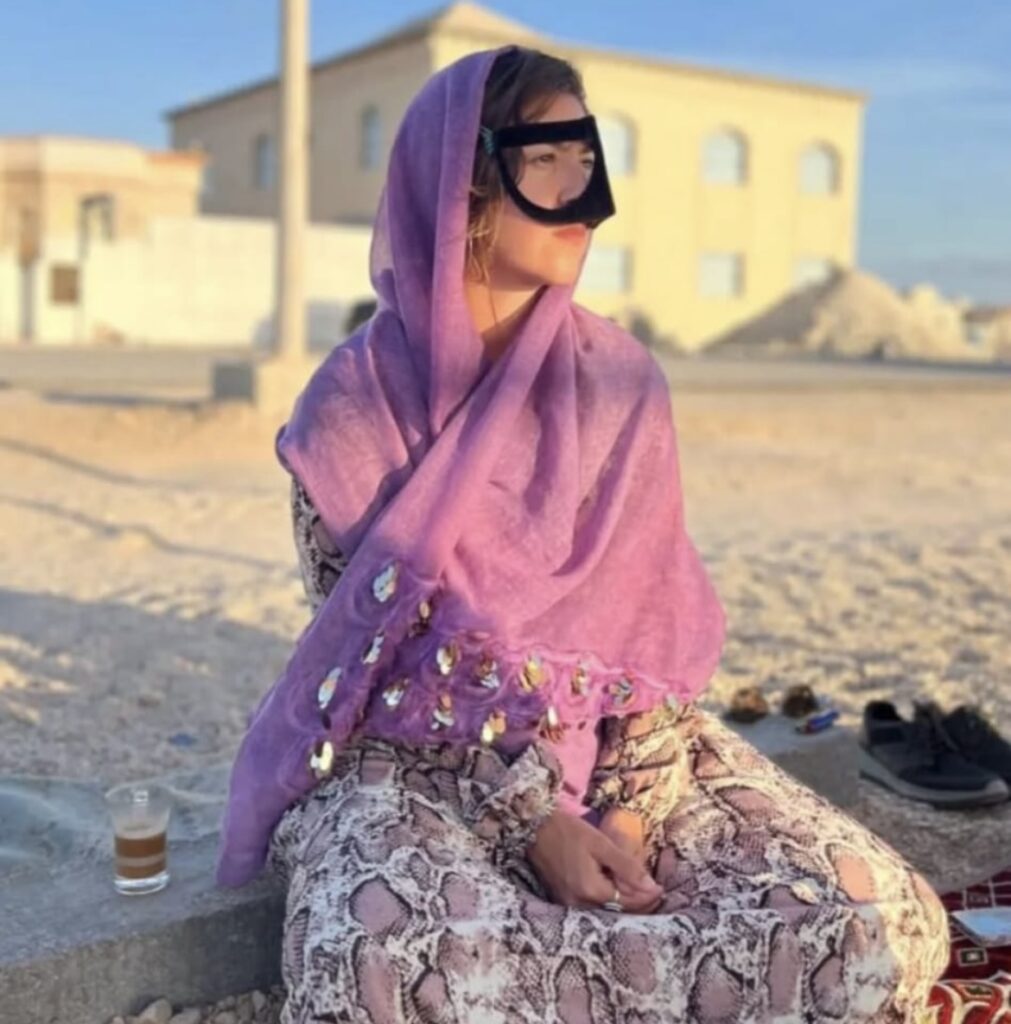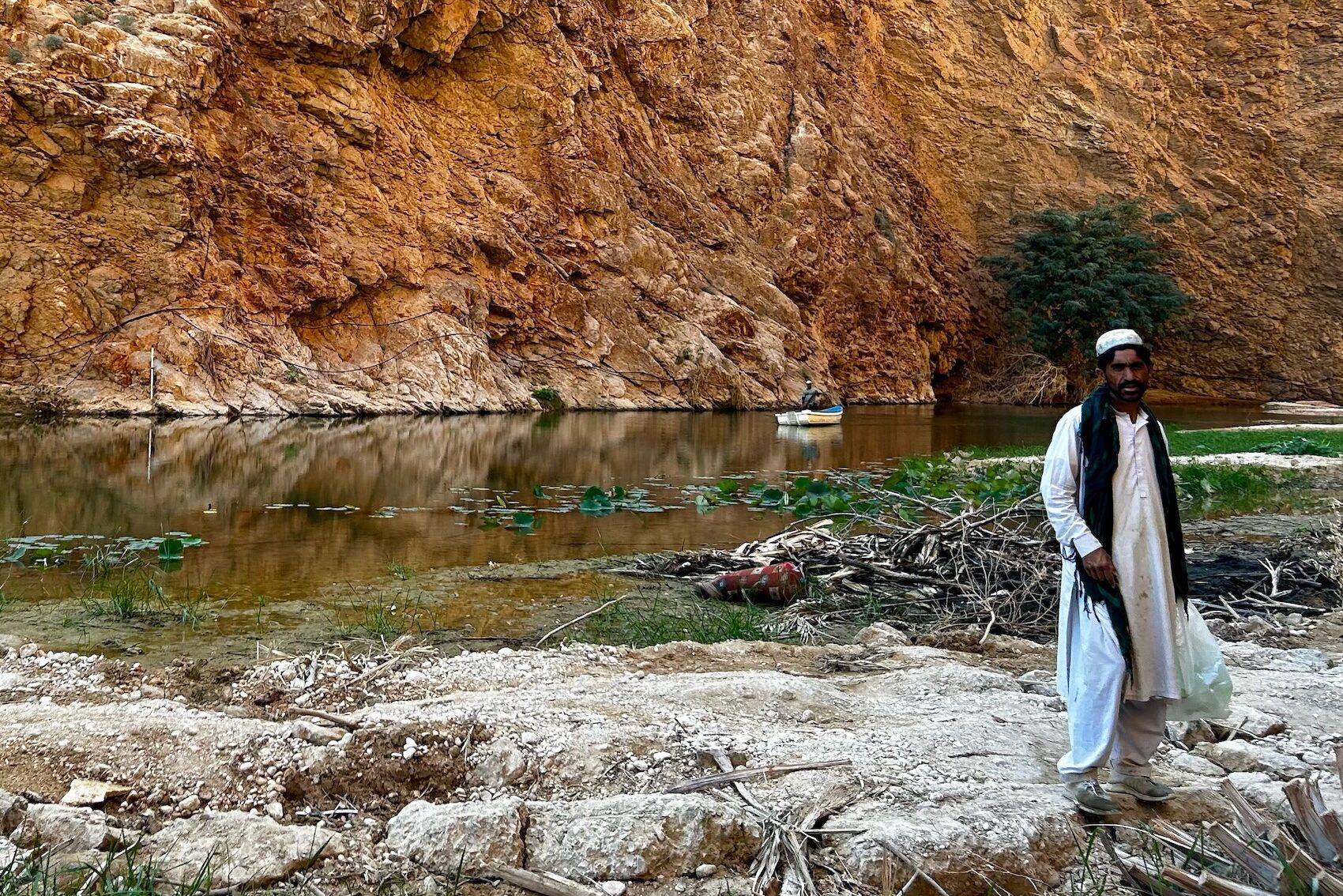The wind blows stronger up on the mountain range that surrounds Salalah on its northern border. The black of night gives life to the city below. Salalah shines in the orange of the street lamps, which from the ocean reach the base of the mountain and stretch out over the horizon. Despite the lights you can see the stars, which shine alive and decorate the sky.
Next to the Ittin Cave, with a glimpse of the horizon on the evening streets of Salalah, there is a café. Secluded and protected from prying eyes, the café offers locals a place to smoke shisha, chew sunflower seeds and chat away from city traffic. Among them sits Hakim, who, although casual and comfortable in the place, is not a local.
Meet Hakim

“I’m a wise man from the region of Sharbithat,” Hakim says with a smile, his words laced with a touch of ironic humor.
Hakim is a vibrant man, his personality as colourful as his clothes, with eyes that shine with warmth and curiosity. Fearless of embarrassment and undeterred by any language barriers, he eagerly engages in lively and heartfelt conversations, always showing a genuine interest in his guests.
Hakim is 38 years old, and is a Bedouin from the coastal town of Sharbithat in Oman, a place he has always called home. Since he can remember, he has worked as a fisheries supervisor along the coast that stretches between the governorates of Dhofar and Dhalkut, two of Oman’s seven regions.
Sharbithat may be a small, remote area, tucked away from the major cities and tourist hotspots of Oman. It is a place often overlooked by locals and rarely known to tourists, who only hear of it through word of mouth. However secluded, in Sharbithat Hakim also rents out his family home to tourists, offering them a chance to experience the rich, local culture and hospitality of his land.
The region is famous for its silver waters and the diverse marine life that thrives in its seas. Sharbithat’s coastline offers attractions like the rocky gorge and the migratory turtles that nest there. Visitors can camp in the picturesque Wadi Sharbithat, hike the mount Manji, and dive in the crystal-clear waters of Sharbithat Beach, a well-known spot for free diving. The coral reefs here are abundant, adding to the area’s natural beauty.

Sharbithat: a paradise unknown to tourists
“People often say it’s too far to reach, thinking it’s hours away from the main cities. They don’t realize what they’re missing.”
400 kilometres north-east of Salalah is the last town in the governorate of Dhofar, Sharbithat.
Hakim speaks of his city with a spark of pride in his voice, dreaming of seeing his beloved hometown become a popular tourist destination, although its distance from the well-known landmarks of the region makes it difficult for most people to even locate it on a map.
What surely makes Hakim’s view unique is his love for their hometown. In Sharbithat, Hakim doesn’t only see his past and present, but also a future for both him and all the inhabitants of the area.
And this is reflected in the tourist experience: with a population of just 750 people (according to the 2010 National Center for Statistics and Information census), the town offers an authentic and intimate experience for visitors. Famous for its recently discovered archeological sites dating back to 6000 years ago, Sharbithat isn’t just a place to explore—it’s a place where you can live the local history and culture on your own skin in every step you take.
With its natural beauty, like the Hanja mountain or the Dahanja rock, Sharbithat is one of the places where every moment will be unforgettable. In Sharbithat, every moment feels unique and intense, every corner filled with wonder.

The Bedouin tradition and culture of Oman
The Bedouin tradition dates back hundreds of years, and is deeply rooted in the concept of nomadism. The way Bedouins live revolves around the land – pastures, tents and nature. The rhythm of life is also shaped by the changing seasons and the events that unfold between them.
As a strictly nomadic society, Bedouin traditions have been passed down through generations, yet they have seldom been documented or preserved in physical form. Among these traditions are the skills of tracking, an intimate knowledge of the land, and the intricate understanding of the stars—guiding their movements and marking the passage of time.
Living the traditions from Sharbithat and from the Bedouins life
When exploring Sharbithat, visitors are invited to engage in activities that offer an authentic glimpse into the local culture.
Many of these activities are deeply practical, rooted in the traditions that have shaped the Bedouin way of life for centuries. For example, Hakim’s mother welcomes guests into her home to share the art of creating traditional baskets. These baskets, once essential for storing camel milk, are a symbol of the resourcefulness and craftsmanship that have been passed down through generations of Bedouins. It’s an experience that connects visitors directly with the region’s heritage, allowing them to understand the daily life of the Bedouins in a hands-on, meaningful way.
In addition to basket weaving, visitors to Sharbithat are also introduced to the region’s traditional clothing. Hakim’s family proudly showcases the garments that have long been part of Bedouin culture, including the mask that women have been wearing for centuries.

Hakim’s brother, an Omani Celebrity
Hakim comes from a large family, with siblings scattered between Salalah and Sharbithat. Among them is his brother Ammar, a well-known singer in Oman under the name of Ammar 808. Ammar’s unique musical style has earned him a special place in Oman’s music scene. You can check out his work on Spotify and experience his talent firsthand!


Ho conosciuto personalmente Hakim ho passato 2 giorni in sua compagnia, dormito nella sua casa,ho cucinato e mangiato in compagnia il pesce pescato nelle acque cristalline ,il mare ,la spiaggia il tramonto la dolcezza degli abitanti del luogo ,la gentilezza di hakim rimarranno per sempre nel mio cuore
Ps.ho già prenotato il ritorno in Oman per novembre 2025